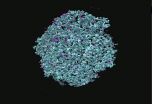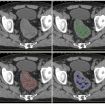Groundwater warming up in synch
2014-11-11
(Press-News.org) For their study, the researchers were able to fall back on uninterrupted long-term temperature measurements of groundwater flows around the cities of Cologne and Karlsruhe, where the operators of the local waterworks have been measuring the temperature of the groundwater, which is largely uninfluenced by humans, for forty years. This is unique and a rare commodity for the researchers. "For us, the data was a godsend," stresses Peter Bayer, a senior assistant at ETH Zurich's Geological Institute. Even with some intensive research, they would not have been able to find a comparable series of measurements. Evidently, it is less interesting or too costly for waterworks to measure groundwater temperatures systematically for a lengthy period of time. "Or the data isn't digitalised and only archived on paper," suspects the hydrogeologist.
Damped image of atmospheric warming
Based on the readings, the researchers were able to demonstrate that the groundwater is not just warming up; the warming stages observed in the atmosphere are also echoed. "Global warming is reflected directly in the groundwater, albeit damped and with a certain time lag," says Bayer, summarising the main results that the project has yielded. The researchers published their study in the journal Hydrology and Earth System Sciences.
The data also reveals that the groundwater close to the surface down to a depth of around sixty metres has warmed up statistically significantly in the course of global warming over the last forty years. This water heating follows the warming pattern of the local and regional climate, which in turn mirrors that of global warming.
The groundwater reveals how the atmosphere has made several temperature leaps at irregular intervals. These "regime shifts" can also be observed in the global climate, as the researchers write in their study. Bayer was surprised at how quickly the groundwater responded to climate change.
Heat exchange with the subsoil
The earth's atmosphere has warmed up by an average of 0.13 degrees Celsius per decade in the last fifty years. And this warming doesn't stop at the subsoil, either, as other climate scientists have demonstrated in the last two decades with drillings all over the world. However, the researchers only tended to consider soils that did not contain any water or where there were no groundwater flows.
While the fact that the groundwater has not escaped climate change was revealed by researchers from Eawag and ETH Zurich in a study published three years ago, it only concerned "artificial" groundwater. In order to enhance it, river water is trickled off in certain areas. The temperature profile of the groundwater generated as a result thus matches that of the river water.
The new study, however, examines groundwater that has barely been influenced by humans. According to Bayer, it is plausible that the natural groundwater flow is also warming up in the course of climate change. "The difference in temperature between the atmosphere and the subsoil balances out naturally." The energy transfer takes place via thermal conduction and the groundwater flow, much like a heat exchanger, which enables the heat transported to spread in the subsoil and level out.
The consequences of these findings, however, are difficult to gauge. The warmer temperatures might influence subterranean ecosystems on the one hand and groundwater-dependent biospheres on the other, which include cold areas in flowing waters where the groundwater discharges. For cryophilic organisms such as certain fish, groundwater warming could have negative consequences.
Consequences difficult to gauge
Higher groundwater temperatures also influence the water's chemical composition, especially the chemical equilibria of nitrate or carbonate. After all, chemical reactions usually take place more quickly at higher temperatures. Bacterial activity might also increase at rising water temperatures. If the groundwater becomes warmer, undesirable bacteria such as gastro-intestinal disease pathogens might multiply more effectively. However, the scientists can also imagine positive effects. "The groundwater's excess heat could be used geothermally for instance," adds Kathrin Menberg, the first author of the study.
INFORMATION:
ELSE PRESS RELEASES FROM THIS DATE:
2014-11-11
Many businesses now offer customers the opportunity to make charitable donations to good causes along with their purchases, but does this really encourage the customer to buy more? According to a new study in the Journal of Marketing, the answer is a firm "Yes."
"The mere presence of a charitable donation opportunity can generate significantly more sales," write authors Michelle Andrews (Temple University), Xueming Luo (Temple University), Zheng Fang (Sichuan University) and Jaakko Aspara (Hanken Swedish School of Economics). "Offering the donation nearly doubled the ...
2014-11-11
When consumers see a company performing good deeds, they often assume that the company's products are healthy. According to a new study in the Journal of Public Policy & Marketing this may be far from true, and the company's socially responsible behavior may be creating a "health halo" over unhealthy foods.
"Research demonstrates that consumers frequently engage in inference making when evaluating food products. These inferences can be highly inaccurate, leading to unintended, unhealthy consumer choices," write authors John Peloza (University of Kentucky), Christine Ye ...
2014-11-11
A novel method of altering a protein in milk to bind with an antiretroviral drug promises to greatly improve treatment for infants and young children suffering from HIV/AIDS, according to a researcher in Penn State's College of Agricultural Sciences.
That's critical because an estimated 3.4 million children are living with HIV/AIDS, the World Health Organization reports, and nine out of 10 of them live in resource-limited countries in sub-Saharan Africa, where effective antiretroviral treatments still are not widely accessible or available. International medical experts ...
2014-11-11
Enterotoxigenic Escherichia coli (ETEC) bacteria are responsible each year for around 400 million cases of diarrhoea and 400,000 deaths in the world's low- and middle-income countries. Children under the age of five are most affected.
ETEC bacteria also cause diarrhoea in nearly one in two travellers to these areas.
Major breakthrough
Researchers at the University of Gothenburg's Sahlgrenska Academy are world leaders in research into ETEC and have now made a major breakthrough in collaboration with colleagues from the Wellcome Trust Sanger Institute in the UK, Karolinska ...
2014-11-11
As football players are learning, a violent blow to the head has the potential to cause mild to severe traumatic brain injury -- physical damage to the brain that can be debilitating, even fatal. The long-term effects run the gamut of human functioning, from trouble communicating to extensive cognitive and behavioral deterioration. To date, there is no effective medical or cognitive treatment for patients with traumatic brain injuries.
But a new study from Tel Aviv University researchers points to an "enriched environment" -- specially enhanced surroundings -- as a promising ...
2014-11-11
Technology developed at the University of Sussex helps hospitals make earlier and more accurate treatment decisions and survival assessments for patients with bowel cancer.
Bowel cancer kills more than 16,000 people a year in the UK, making it the nation's second-most common cause of cancer death (after lung cancer).
A novel medical-imaging technology, TexRAD, which analyses the texture of tumours, has been shown in trials to enable early diagnosis of those bowel-cancer patients not responding to the standard cancer therapy better than other available tumour markers. ...
2014-11-11
Changes to China's drink driving laws are catching the community off guard with more than 70 per cent of people unaware of the blood alcohol limits that could see them face criminal charges, according to new Queensland University of Technology (QUT) research conducted in two Chinese cities.
QUT's Centre for Accident Research & Road Safety - Queensland (CARRS-Q) has partnered with organisations in China to promote road safety and reduce fatalities and injuries, as alcohol-related driving offences are being brought into sharper focus because of the country's rapid motorisation ...
2014-11-11
A new climate change modeling tool developed by scientists at Indiana University, Princeton University and the National Oceanographic and Atmospheric Administration finds that carbon dioxide removal from the atmosphere owing to greater plant growth from rising CO2 levels will be partially offset by changes in the activity of soil microbes that derive their energy from plant root growth.
Soils hold more carbon than all of the earth's plant biomass and atmosphere combined. The new work published by Benjamin N. Sulman, a postdoctoral researcher in the lab of co-author and ...
2014-11-11
INDIANAPOLIS -- A new treatment regimen for hepatitis C, the most common cause of liver cancer and transplantation, has produced results that will transform treatment protocols for transplant patients, according to research published online today in the New England Journal of Medicine.
The investigational three-drug regimen, which produced hepatitis C cure rates of 97 percent, is an oral interferon-free therapy. Previously, the typical treatment for hepatitis C after a liver transplant was an interferon-based therapy, usually given for 48 weeks. It had a much lower response ...
2014-11-11
Lead researcher, Dr Sarah Dunstan from the Nossal Institute of Global Health at the University of Melbourne said the study is the first large-scale, unbiased search for human genes that affect a person's risk of typhoid.
Enteric fever, or typhoid fever as it more commonly known, is a considerable health burden to lower-income countries.
This finding is important because this natural resistance represents one of the largest human gene effects on an infectious disease.
"We screened the human genome to look for genes associated with susceptibility to, or resistance ...
LAST 30 PRESS RELEASES:
[Press-News.org] Groundwater warming up in synch




